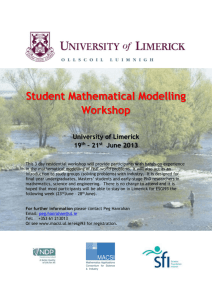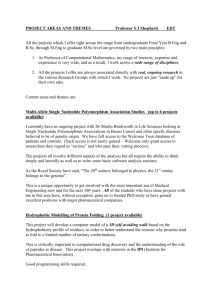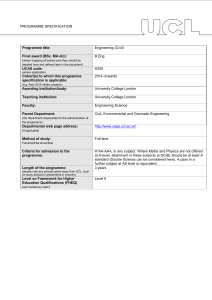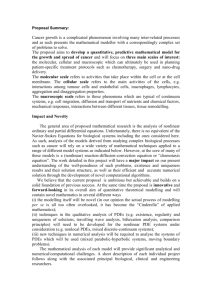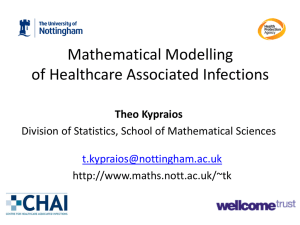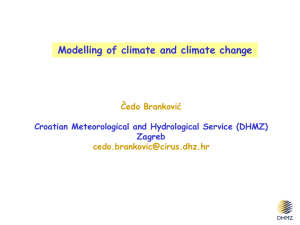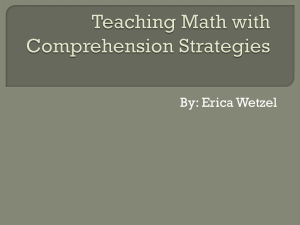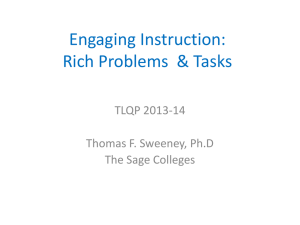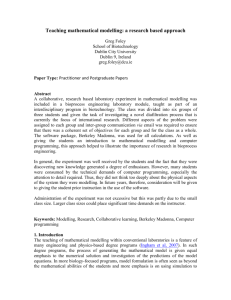Lectures on mathematical modelling
advertisement
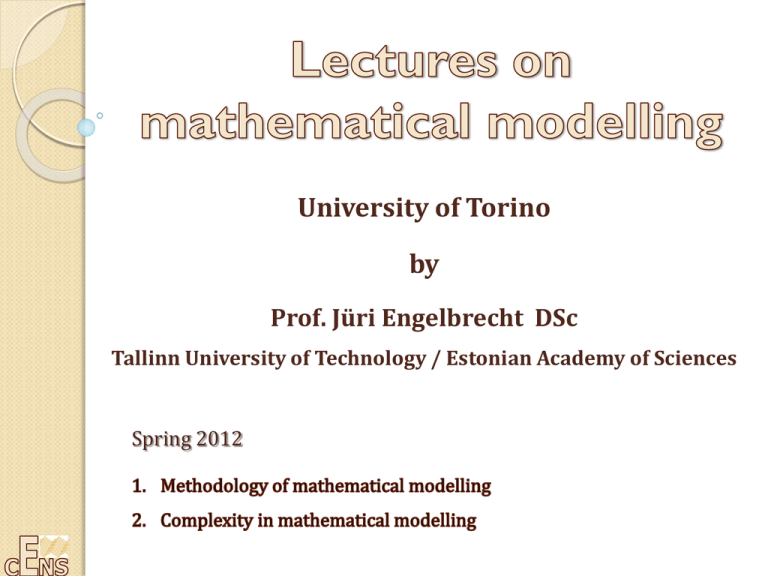
University of Torino by Prof. Jüri Engelbrecht DSc Tallinn University of Technology / Estonian Academy of Sciences Spring 2012 Lecture 1: Methodology of mathematical modelling The main principles of mathematical modelling are briefly explained together with a short historical sketch. The main stages of modelling are described focusing on validation of results and improvement of a model. For modelling of physical processes, the importance of conservation laws is stressed and explained as well as the need for using thermodynamical considerations. This forms a solid basis for many well-known and also for newly developed models. For modelling of processes in biology or social life, the situation is much more complicated and the emphasis is more on interpreting the observation data. Several arguments used for modelling such processes is discussed and examples given. Motto: Everything must be made as simple as possible. But not simpler. A.Einstein Lecture 2: Complexity in mathematical modelling Contemporary understanding of the world is based on the concept of complexity. Complexity research is a holistic process and takes many constituents of a whole into account while the outcome is strongly dependent on interaction between the constituents. That is why the systems out of equilibrium, adaptive and self-organising systems, networks, nonlinear dynamical systems, etc are of importance. The main properties of complex systems are explained and several examples given which demonstrate simple models of complex behaviour in physics, biology, mathematics, economics and so on. Motto: The whole is more than the sum of its parts. Aristotle References I (methodology) 1. A.C.Fowler. Mathematical Models in the Applied Sciences. Cambridge University Press, 1997. 2. D.Clements. Mathematical Modelling. Cambridge University Press, 1989. 3. Concise Encyclopedia of Modelling and Simulation. D.P.Atherton, P.Borne (eds.), Pergamon Press, Oxford et al., 1992. 4. P.Bak. How Nature Works. Oxford University Press, 1997. 5. G.I.Barenblatt. Scaling, Selfsimilarity, and Intermediate Asymptotics. Cambridge University Press, 1996. 6. J.Caldwell, D.K.S.Ng. Mathematical Modelling. A Case Studies Approach. Kluwer, 2004. 7. M.M.Meerschaert. Mathematical Modelling. Elsevier, 2007 (Chapter 1 in Web). References II (complexity) 1. G. Nicolis, C. Nicolis. Foundations of Complex Systems. World Scientific, Singapore, 2007. 2. P. Érdi. Complexity Explained. Springer, Berlin, 2008. 3. S. Strogatz. Sync: Rhythms of Nature, Rhythms of Ourselves. Allen Lane, 2003. 4. J. Gribbin. Deep Simplicity. Allen Lane, 2004. 5. M. Buchanan. Small World. Phoenix, 2003. 6. N. Johnson. Simply Complexity. One World, Oxford, 2007. 7. Encyclopedia of Complexity and Systems Science. Robert A. Meyers (Ed.): Springer 2009, vol 1-11, (10370pp). From the web 1. Mathematical model www.answers.com./topic/mathematical-model. 2. G. de Vries - what is mathematical modelling? www.math.ualberta.ca/~devries/erc2001/slides.pdf. 3. Teacher package: Mathematical Modelling http://plus.math.org/issue44/package/index.html. 4. ScienceDaily: Mathematical Modeling News. 5. Wikipedia. Images for mathematical modeling.
